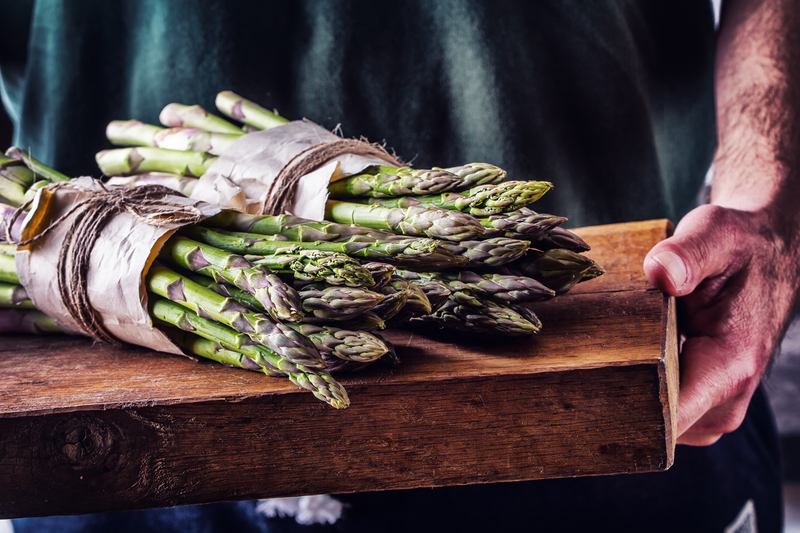Guide to Safeguarding Plants Against Wind Damage
Posted on 15/06/2025
Guide to Safeguarding Plants Against Wind Damage
Wind can be an invisible foe in the garden, striking suddenly and leaving a trail of broken stems, uprooted saplings, and battered leaves. Whether you nurture delicate ornamentals or robust vegetable beds, protecting plants from wind damage is essential for a thriving and resilient garden. In this comprehensive guide, you'll discover how to shield your green spaces from the unpredictable force of wind, using both time-tested techniques and innovative strategies.

Understanding Why Wind Harms Your Plants
Before diving into preventive measures, it's important to understand how wind causes plant damage. Wind stress is more than just a physical force--it can dehydrate plants, break branches, disturb roots, and even stunt growth over time. Here are some of the key risks:
- Mechanical breakage: Strong, gusty winds can snap stems, break branches, and even uproot entire plants.
- Water loss: Wind increases transpiration (water loss through leaves), causing plants to dry out much faster.
- Soil erosion: Bare or loose soil is especially vulnerable, leading to exposed roots and nutrient loss.
- Reduced pollination: Extreme wind can reduce pollinator activity, affecting fruit and seed production.
- Cold damage: Wind accelerates the effects of cold snaps by stripping away warm air layers around plants, increasing risk of frost injury.
Understanding these factors can help you target your efforts effectively to prevent wind-related plant injuries.
Choosing Wind-Resistant Plants
One of the easiest ways to safeguard your plants from wind damage is to select species that are naturally more resistant to wind stress. While no plant is completely immune, some are better adapted to cope with strong breezes thanks to their flexible stems, deep roots, or leathery leaves.
Examples of Wind-Resistant Plants
- Grasses: Ornamental grasses like Muhlenbergia, Miscanthus, and Panicum thrive in breezy conditions.
- Native shrubs: Sea buckthorn, elderberry, and some varieties of juniper handled windswept habitats well.
- Tough perennials: Daylilies, yarrow, lavender, and coreopsis have sturdy structures that stand firm in the wind.
- Hardy trees: Oaks, pines, and willows often withstand strong winds better than shallow-rooted species.
By integrating wind-tolerant plants into exposed garden areas, you can reduce the impact of storms naturally.
Strategic Plant Placement and Garden Design
Thoughtful garden design is a proactive way to protect your plants from wind damage. The arrangement of trees, shrubs, and other elements can help deflect or slow prevailing winds before they reach your most fragile blooms.
Assessing Wind Direction and Exposure
Start by observing the direction and strength of typical winds in your area. Note any open spaces, valleys, or corridors that speed up airflow. This will help you position defensive features efficiently.
Planting Windbreaks and Shelterbelts
Windbreaks are rows of trees or shrubs planted to block or redirect wind. For best results:
- Plant the windbreak at a right angle to the prevailing wind.
- Use a mix of evergreen and deciduous species for year-round protection.
- Stagger or double-row your windbreak for increased density.
A good windbreak can slow wind speeds on the leeward (downwind) side by up to 50%, offering a protective zone 5-10 times the height of the barrier.
Garden Positioning Tips for Less Wind Damage
- Place sensitive plants closer to walls, fences, or structures for added shelter.
- Grow vulnerable seedlings in a greenhouse or cold frame until they toughen up.
- Use denser plantings to create microclimates within the garden.
Physical Supports and Protective Structures
Implementing physical barriers can provide much-needed relief for both new and established plants.
Below are popular and effective options to safeguard your garden from wind harm:
Staking and Guying Individual Plants
- Use strong wooden or metal stakes driven deep into the ground.
- Secure the plant with soft, flexible ties to prevent abrasion and allow for gentle movement. Materials like old cloth, rubber tree ties, or soft rope work well.
- Guying involves anchoring trees with rope or wire attached at an angle for added support, especially right after planting.
Regularly check and adjust ties to avoid girdling as the plant grows.
Creating Temporary Windbreaks
- Install burlap screens, lattice panels, or fencing windbreaks on the windward side.
- Position windbreak fabric several feet from plants to reduce turbulence.
- For small beds or containers, use bamboo screens or portable garden shades during storms.
Temporary wind barriers are especially useful during the first year as young trees and shrubs establish their root systems.
Row Covers and Cloches
- Lightweight row covers or garden fleece can protect seedlings and tender crops from sudden gusts.
- Use cloches (small plant domes) to shield individual plants from harsh wind.
These covers also help safeguard plants from cold snaps, pests, and excessive sun, making them multifunctional investments.
Soil Health and Mulching Methods for Wind Protection
Healthy soil is the foundation of any resilient garden. Soil that is rich, well-structured, and protected can greatly reduce root disturbance from high winds.
Why Roots Matter
Strong, deeply-anchored roots help plants resist uprooting. To encourage this:
- Water deeply but less frequently to stimulate deep root growth.
- Avoid regular shallow watering, which encourages shallow, easily-disrupted roots.
- Consider mycorrhizal inoculants to improve root structure in new plantings.
Mulching Against Wind Stress
- Apply organic mulch (wood chips, straw, leaf mold) around the base of plants.
- Mulch helps retain soil moisture, buffers temperature swings, and prevents erosion.
- For newly planted trees, create a mulch ring at least three feet in diameter.
Avoid "mulch volcanoes"--keep material several inches away from trunks or stems to prevent rot.
Maintenance Practices to Strengthen Wind Resistance
Routine care can make a surprisingly big difference. Simply by keeping your plants strong and healthy, you'll boost their resilience to wind exposure.
Key Maintenance Techniques
- Pruning: Remove dead, weak, or crossing branches--especially on shrubs and trees. This improves airflow and reduces the chance of breakage.
- Feeding: Use balanced fertilizers or organic compost to encourage sturdy growth, but avoid over-fertilizing, which produces soft, weak stems.
- Inspect regularly: After storms, check for broken branches or leaning plants. Address issues quickly to prevent further damage.
Protecting Specific Plant Types From Wind Damage
How to Safeguard Garden Trees
Trees, especially young saplings, are highly vulnerable to wind uprooting. Here's how to secure them:
- Stake young or newly transplanted trees for the first 1-2 years. Allow a little movement to encourage root development.
- For mature trees, prune out crowded growth and inspect for signs of disease that could weaken branches.
- Leave low branches on young trees--they provide extra stability in windy sites.
Tips to Defend Shrubs and Bushes
- Shear formal hedges just before peak wind seasons to reduce their wind load.
- Groups of shrubs work better as a buffer than isolated specimens--plant in clusters for mutual protection.
Shielding Vegetable Gardens and Herb Beds
Wind can be especially tough on delicate vegetables and herbs. Try these tactics:
- Grow taller crops, like corn or sunflowers, at the edges to act as living windbreaks.
- Use low tunnels, flexible hoops, or netting to shield vulnerable greens from gusts.
- Secure climbing supports and trellises firmly in the ground.
Responding to and Repairing Wind Damage
Despite your best efforts, wind damage to plants can occasionally occur during severe weather. Acting quickly can help plants recover:
- Prune ragged or broken stems cleanly to prevent disease.
- Firm any uprooted or leaning plants back into the soil and provide support.
- Spray with an anti-transpirant or shade with cloth if foliage is scorched or desiccated.
- Water deeply but avoid drowning already stressed roots.
*Monitor plant recovery over several weeks; most healthy specimens bounce back given time and care.*

Embracing Wind as Part of Your Garden's Character
While excessive wind can be challenging, a gentle breeze actually stimulates strong stem and root growth, deters some pests, and creates healthy air circulation. By balancing your plant protection strategies with thoughtful design and resilient species, you can enjoy the movements and moods that wind brings to your landscape--without sacrificing your hard-earned greenery.
Conclusion: Creating a Wind-Proof Garden Sanctuary
Protecting your plants from wind damage is a multifaceted task requiring observation, preparation, and occasional intervention. By selecting wind-tolerant species, designing thoughtful windbreaks, providing physical supports, and maintaining soil and plant health, you'll transform a blustery threat into a manageable element of your garden's life.
- Study the prevailing winds in your region and adjust planting and shelter accordingly.
- Combine living and structural windbreaks for robust, season-long protection.
- Maintain healthy soil and resilient plants with good watering, mulching, and pruning habits.
- Be proactive after windstorms--prune, support, and tend to your plants as needed.
With these techniques, your plants will withstand wind damage and flourish, no matter how brisk the breeze becomes. Safeguarding your plants against wind damage is not only wise, but also an act of stewardship toward the living landscape you cherish.

